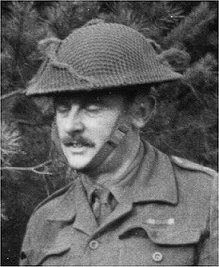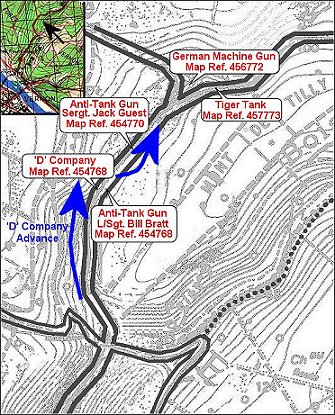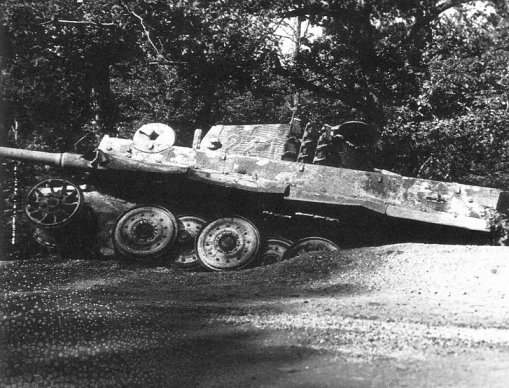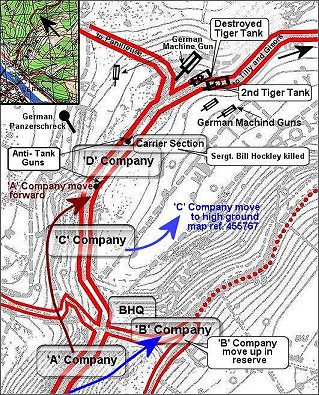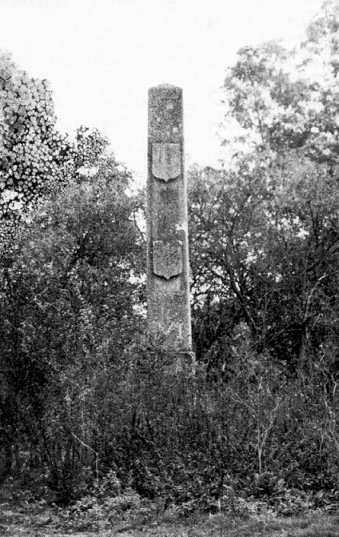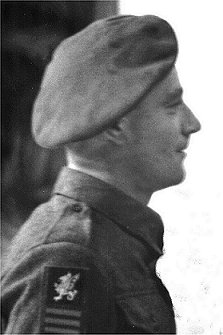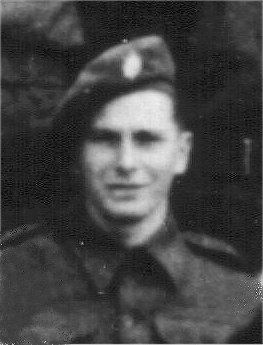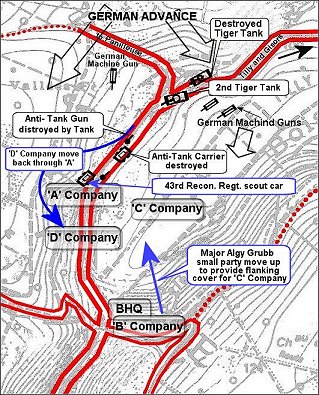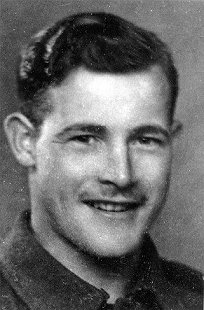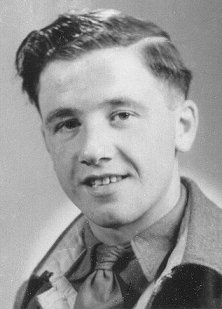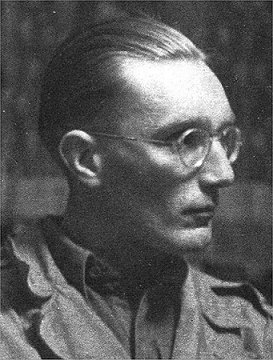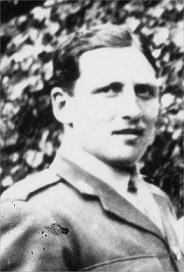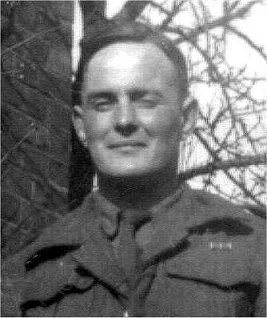1st Battalion Worcestershire Regiment - North West Europe 1944
VERNON - The River Seine Crossing (25th to 28th August 1944) - Part 7
Advance towards Tilly (27th August 1944)
During the early hours (27th August) the Worcesters moved down the road by a disused factory building and were ready to begin their advance by 06.30 hours (the forward company was at map reference 453765 – see map in Part 6). No British tanks had crossed over during the previous night but it was expected that one Troop would cross at first light and would move up the road to join the Worcesters by 07.00 hours. However, this did not materialise as tanks intended to support the Battalion had been directed to 5th D.C.L.I. who, earlier that morning (27th), had become engaged in operations with the enemy at Pressagny L'Orgeuilleux. Accordingly no tanks were available to support the Worcesters in the initial stages of the advance. Lieut.-Colonel Osborne-Smith Commanding Officer, met the Brigade Commander at the Class 9 Bridge over the river and received his final orders. On his return the battalion moved off at 08.10 hours. The advance towards Tilly was lead by `D' Company, up the twisting road through the densely wooded terrain. The strength of the Battalion at this time was only 533. Rifle Companies averaged sixty-five and had been reorganised prior to the crossing of the Seine into two Platoons, each approximately twenty five strong with an enlarged Company H.Q. carrying the light machine guns and the mortar of the third Platoon. The Carrier Platoon consisted of three Sections and the Mortar, Anti-Tank and Pioneer Platoons were up to strength. |
Lieut.-Col. R. Osbourne-Smith |
There had been unconfirmed reports that about 100 enemy were in Tilly. It was accordingly decided to move the Battalion along the road in normal advance-to-contact formation.
The road by which Worcesters moved ran along the east side of a steep re-entrant and was bordered on either side by woods and thick undergrowth. The ground to the east, or right of the road, rose sharply from sixty metres to a height of about 110 metres initially, whilst to the west it fell away to about fifty metres. Visibility off the road was very limited, fifteen yards being a fair average.
Movement of ‘D’ Company and Anti-Tank Guns |
At about 08.20 hours, as it reached a bend in the road (map reference 454768), the leading Platoon of ‘D’ Company was fired on by a machine gun from the road junction ahead (map reference 456772) and the Platoon Commander and his runner were wounded. The machine gun was located and dealt with by the platoon aided by fire from the 3-in. Mortar Section and the advance continued at about 09.20 hours. Shortly after this, information was received from ‘D’ Company that the noise of tracks had been heard and this was immediately confirmed that a Tiger tank had been seen on the road some 200 yards ahead with a party of infantry accompanying it. The Carrier Section moved off the road on foot up the steep ground to protect the right flank, and the second Platoon moved through with a view to destroying the tank with the P.I.A.T. but, owing to the thick undergrowth and the steepness of the ground, they were unable to find a suitable position from which to engage the tank. Meanwhile the Section of Anti-Tank Guns in support had gone into action on the road, being unable to deploy off it; the leading gun, commanded by Sergt. Jack Guest, at the bend in the road (map reference 454770) and the second one, commanded by Lance Sergt. Bill Bratt about 100 yards further back (at map reference 454768). The second Platoon had no sooner reported their inability to engage the tank when it began to move down the road and to nose round the bend at about 300 yards ahead on the left (map reference 457773). The leading 6-pounder anti-tank gun, with only the off-side of the hull and the turret of the tank visible, immediately engaged with "Sabot" ammunition (a projectile specifically designed for anti-tank use). The first shell hit and penetrated the mantlet surrounding the German's 88mm gun. In a few seconds the 6-pounder was reloaded and fired again: another hit, then again, another hit, both times in the hull. The Tiger Tank was beaten. The surviving crew quickly started to bale out of the stricken hulk. The 6-pounder continued to fire, with two rounds of high-explosive shells. There was an explosion and the tank burst into flames. The crew were all killed; one lay draped half in, half out of the turret. The enemy supporting escort of infantry then hurriedly withdrew. |
The time was now about 11.00 hours and orders were received from Brigade H.Q. for the Battalion to stand fast, as the Battalions moving on either flank were being delayed by the same German battle group. The Commanding Officer now moved 'C' Company forward on to the high ground on the right (map reference 455767), to stop any enemy attempt to infiltrate that flank. 'D' Company was told to consolidate where it was astride the road, whilst 'A' company held a similar position behind them. 'B' Company, under Major Algy Grubb, was in reserve further back down the road in a 'layby' next to a pointed obelisk, with Company H.Q. and the mortars platoon. Major Algy Grubb (‘B’ Company) recalls: “I had my shirt off and was beside my company carrier in the process of having a shave in the Sunday morning sunshine. I could hear some commotion going on further up the road but felt that it was nothing for me to worry about, after all my company was in reserve. The first thing that attracted my attention was men running back down the road in panic. Then a bullet ricocheted off the top of this monument alongside which I was standing, knocking down a great lump of stone. The bullet carried on and went through the head of a carrier driver, killing him instantly. I thought to myself 'To hell with this!' Then things really started to boil up!” |
German Tiger Tank knocked out by the 1st Worcestershire’s (Gisors Road) |
Company positions and movement |
It was now about 12.30 hours ‘D’ Company were engaged on both flanks by machine guns which had skilfully infiltrated through the thick undergrowth, making it difficult to pinpoint their positions. The leading platoon of ‘D’ Company were suffering casualties. At the same time a second Tiger tank was reported moving down the road. Machine gun fire on the flanks was now increasing, the Carrier Section on the right flank was pinned (the Section Commander, Sergt. Bill Hockley and another of the section being killed) whilst the leading Platoon was being fired on by the machine gun of the second tank. The second Platoon was engaging enemy to the left of the road, aided by an armoured car, and Company H.Q. was firing up the road to the right of the knocked-out Tiger tank. Although the enemy on either side of the road could not be seen, their approximate locations were known. ‘D’ Company passed word back to the Mortar Platoon and the F.O.O. of 172 Artillery Battery, who were back at BHQ position in the ‘lay-by’, fire was then brought down on the enemy, trees and undergrowth on both sides of the road began erupting into flames, as high-explosive shells crashed down. Lieut.-Colonel Osborne-Smith now realised that the most immediate problem was the high ground on the right where ‘C’ Company were positioned on the slopes, but the hilltop still seemed to be wide open to any enemy flanking movement. Major Grubb (‘B’ Company) was therefore given the task to stop any enemy infiltration though the woods on the hilltop. He collected the thirteen company's Bren guns together and the four 2 inch mortars and aimed them towards the hilltop to provide cover. |
It was about this time that Algy Grubb met Major Tony Benn, the battalion's second-in-command, who had joined the battalion just a fortnight earlier. Major Benn set off down towards the main road. Major Grubb then split his company into two groups, as opposed to the normal structure of three platoons. He decided to lead the first group himself to the top of the hill, whilst his second-in-command, Captain Noel Watkins, came up behind with the riflemen and took up a position just short of the crest. Major Algy Grubb (‘B’ Company) recalls; “I took the company H.Q.'s Bren gun myself, whilst my two 'bodyguards', Private Joe Cook (batman) and Private George Bromwich (runner) carried my ammunition. The hill was very steep, thick with trees at the bottom near the road, then a grassy slope and finally another sprinkling of trees at the top.” |
Monument in ‘lay-by’ |
|
Pte. G. Bromwich |
At the bottom of the hill, in the ‘lay-by’ near the monument, Captain Jock Bannister commanding Mortar Platoon, provided covering fire with his 3 inch mortars. Captain Jock Bannister (Mortar Platoon) recalls: “My mortars were pumping the stuff over the top of the hill. They had been firing continuously and they had all overheated. What was happening was that as soon as a mortar bomb was put into the barrel, its primary charge was igniting and the bombs were falling only twenty yards away. This in itself was safe enough, for there has to be a projection of 'X' yards before the bomb is fused and could explode, but the mortars somehow had to be cooled down. I lined up my men and got them to pee on the barrels by numbers!”
|
|
As Major Grubb set off up the slope, he shouted to Jock Bannister – “keep the bloody things going!” Halfway up the hill Grubb made contact with Major Gerry Clover who was dug in with ‘C’ Company.
Down on the main road, the leading company (‘D’ Company) was now being pressed by a second Tiger tank, moving slowly forward into their positions. The tank's machine-gun was continuously firing at the Worcesters who were dispersed along the verges and amongst the trees. The anti-tank gun was still in position at 455770 covering the road but the crew were being harassed by another unallocated enemy machine-gun from their left, and had to keep their heads down. Private Howard Francis (16 platoon, ‘D’ Company) recalls: “I saw the Tiger tank pull out on to the road just around a bend in front of use. Suddenly, there was machine gun fire all around us and I was hit in my left arm, breaking the bone. I passed my Bren gun over to my colleague and then made my way back under the hedge row cover to a heavy armoured scout car which was in the road and told them there was a tank around the bend; their reply was ‘don’t we know it!’ I then heard the man say medics, and I must have passed out – I came to in a field hospital two days later on the 29th.” The second Tiger tank moved cautiously round the previously knocked-out tank. Before the exposed 6-pounder gun could get off a shot, the tank fired one of its 88mm shells, smashing the gun into a pile of twisted metal, killing all the crew. The tank then locked its sights on the 6-pounder's carrier; and knocked it out causing it to explode into flames. A few moments later another blinding flash and a heavy armoured car from Troop 5, ‘B’ Squadron of 43rd Reconnaissance Regiment (commanded by Sergt. G. Barraclough), who were in support, met the same fate. Amazingly, Sergeant Barraclough and his crew all scrambled out safely with only minor superficial injuries. |
Private H. P. Francis |
Company positions and movement |
The Tiger tank continued down the road carving its way into the heart of 'D' Company. The leading Platoon (16) of ‘D’ Company, which was initially 25 strong, had suffered 30 per cent casualties, including the Platoon Commander, and owing to the thick nature of the country were still unable to locate the enemy machine guns. Their position, and that of the whole Company, was becoming increasingly precarious. ‘D’ Company was now ordered to withdraw through ‘A’ Company who were then in position astride the road about 100 yards behind (map reference 453767). ‘C’ Company had reported that their original location was extremely enclosed and thick and had therefore moved their positions further down the hill toward the road (map ref. 454765) where visibility was better. Lieut. Stan Trimnell (8 Platoon, ‘A’ Company) recalls: “We were advancing as usual with sections on either side of the road. As we move forward around a bend there was a burst of machine gun fire hitting my batman, runner and myself. Fortunately the stretcher-bearers collected us with very little delay.” The Tiger tank had now come to a halt on the road, its machine-gun kept up a non-stop stream of bullets sweeping along the road and the verges making it difficult for 'D' company to begin its withdrawal. Slowly, in ones and twos, the men of 'D' company moved down the road, taking cover where they could and passed through ‘A’ Companies position. The men were suddenly confronted by their own troops hurriedly withdrawing through their lines. Thinking it to be a general retreat, some of 'A' Company also jumped up and joined them. For a few moments, control seemed to be lost. |
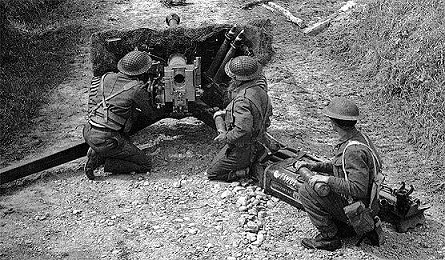
6-pounder Anti-Tank Gun
Private Ronald Cherry (7 Platoon, ‘A’ Company) recalls: “I was part of a two man Bren gun team with Private Wilfred Edgington. As we moved forward up the side of the road we could hear the noise of tank tracks heading towards us. A Tiger tank then appeared from around a bend in the road ahead with Germany infantry in support. Suddenly there was a burst of fire and my mate Edginton was hit twice in the chest killing him instantly. One of the bullets passed straight though him and hit me in the chest knocking me down to the ground and causing a superficial chest wound. The next thing I saw was a German soldier looking down and prodding me with his rifle. I thought I was about to be shot! A German sergeant then came over and I was taken prisoner. They took me to a farmhouse further back in their lines where there was an officer. I was then given food and a drink and sat outside with a German guarding me. The next morning I was put on a military bus, and told to sit on the roof where the baggage is usually placed. Eventually, I was taken to Stalag 7A prisoner of war camp. Whilst I was there I was sometimes sent to work in Munich to help with bomb damage. At the end of the war I was released by the Americans.” Two stretcher bearers, Private Durkin and Private Kilby, who had gone forward to tend the wounded were also captured and put to work in the German first aid post. To their surprise, later the following day a German officer suddenly decided to surrender to them and asked if they would lead his dwindling squad back through our lines. The two stretcher bearers walked in through the Battalion lines with their captors, one officer and thirty-six Other Ranks. |
Private R. Cherry |
Private T. Dutton |
Private Tommy Dutton (17 Platoon, ‘D’ Company) recalls: “I was running like mad down this road with a comrade, Teddy Harris. A bullet hit the road behind him and flew up into his back, but we still kept running. We then came level with one of our majors (Major Tony Benn, battalion second-in-command), stood on the side of the road, shouting, “Stop, stop!” We halted. He first ordered us to dig in where we were, then told us to go up the slope to meet the attack. On the way up, Pte Les Lunnon, a Bromsgrove lad, was coming down the slope carrying his Bren gun by the carrying-handle. Blood was oozing from a bullet wound in his wrist; he asked someone to open his hand so that he could let go of the gun. We continued to clamber up the slope at the side of the road. It was thickly wooded, very close country. Halfway up the slope I was struck by a German bullet, a scalp wound; the bullet penetrated the front rim of my steel helmet and out through the back rim, running along the side of my head.” Major Tony Benn, the battalion's second-in-command, had moved up the road from Battalion HQ. He immediately saw the men running towards him. As he stood in the open on the road he tried to regain order and get the men in to cover. At that same moment, the Tiger tank started to move forward and rounded the bend, turning its machine-gun fire on those men still on the road. Caught in the open, they were mown down like flies. Tragically Major Benn was killed just as order had been restored. |
Back at battalion HQ two Sherman tanks from the 4th/7th Royal Dragoon Guards had just arrived. One of the tanks was a Sherman Firefly, with a 17-pounder gun. In one of the tanks was 'A' Squadron's commander, Major 'Jackie' Goldsmid. After getting briefing from the battalion commander, Goldsmid sent the Firefly up the road with a view to engaging the German tank, should it get too close to the battalion HQ. The second Sherman tank and a heavy armoured car took up positions where they could counter any infiltration on the left flank of ‘A’ Company. This they did most effectively with the help of spare personnel of Battalion H.Q. who indicated several targets to them.
It was now apparent that the left flank was not the dangerous one, since any attempt at movement by the enemy here was immediately scotched by fire from the A.F.V.s and Battalion H.Q. personnel. It was up on the hilltop on the right flank where infiltration was continuing as the German Battle Group Schrader pressed forward. So ‘B’ Company were ordered to move up on the right of ‘C’ Company. ‘D’ Company meanwhile had now come into reserve and were reorganizing preparatory to moving to the high ground (map reference 455763).
Near the top of the hill, just below the crest, Major Grubb (‘B’ Company) set up his Bren guns behind a small bank with his four, 2 inch mortars about six yards behind. Shortly after Captain Noel Watkins joined him but the rest of the men of ‘B’ Company were still at the bottom of the hill. Major Grubb then broke cover for a few seconds and looked around; there was nothing to be seen. He then made the mistake of looking up once more from the same position (breaking one of his golden rules - never look up in the same place twice). Suddenly, a burst of machine-gun fire from behind a mound 15 yards away. Major Grubb was hit, but luck was on his side, the first bullet went though his helmet and was deflected upwards inside just missing his head. A second bullet then passed through his coat collar and set fire to his tunic. The force of the bullet's impact knocked him out for a few seconds. The enemy machine-gun was only fifteen paces away, shielded behind a mound. Major Algy Grubb (‘B’ Company) recalls: “I could never get on with a steel helmet as they cut into my head. So I had arranged with the regimental hatter Thomas & Stone in Jermyn Street to make me a custom helmet. I was measured and they made me a scull cap out of cork with pieces of rubber tubing sewn on around the base to cushion the steel helmet which rested on top. It was this cork skull cap that saved my life. The first bullet hit my helmet at the front, went straight through and was deflected upwards by the cork skull cap and shot out the top of the helmet.” Major Grubb then came under attack from German stick grenades landing only a few yards away and had to lay flat to the ground while they exploded. He tried to counter by throwing a few 36 grenades himself but could not get the range. Captain Watkins was then ordered to take command of the Bren guns while Major Grubb crawled back to his 2 inch mortars. Taking charge of one himself, he directed the crews of the others to pass him the ammunition, and he fired on the enemy machine gun position. After firing several bombs, he crawled back to Captain Watkins. Without knowing it, he had hit the target, an MG 42 machine-gun and its crew. It later transpired that this gun was being operated by the German company commander. |
Major A. A. Grubb |
Captain N. Watkins |
Captain Noel Watkins later jokingly reported to Grubb, that the Bren gunners thought that their major was deserting them when he was moving back to the mortars! The enemy now began to gather in strength ready to push forward over the top of the hill. Fire came at 'B' Company from all parts of the summit. Although most of the riflemen of 'B' Company where still at the bottom of the hill, the Bren guns on the top could still provide much needed fire power. Captain Watkins was ordered to keep up a non-stop barrage of fire into the woods on the hilltop, whilst Major Grubb, Private Cook (his batman) and Private Bromwich (his runner) made a flanking movement round the enemy-held summit. Due to the amount of fire on the hilltop from all directions Major Grubb’s little group where unable to reach their objective and had to take cover. Tanks down on the main road were also sweeping the hillside with their fire. The 3 men remained stranded until nightfall, when the Commanding Officer sent out a search party from another company to find them. Throughout this period of reorganisation the tanks, armoured car and all available Bren guns had been firing continuously. Targets were difficult to pin-point, but by firing in the general direction of the enemy any further infiltration was finally stopped. In addition, the Worcestershires 3 inch Mortar Platoon and 172 Battery R.A., with occasional help from Medium Artillery, had been engaging likely forming-up areas and targets in the woods further north. |
The average strength of the Companies had now fallen to forty-five. For this reason a reorganisation was begun and, owing to the close nature of the country, the Battalion took a close all-round defensive position. Whenever the enemy opened up with machine guns he was answered with all available weapons. He attempted no further advance.
At about 20.00 hours the second enemy Tiger tank put down a smoke screen and withdrew up the road, leaving the infantry where they were.
It is noteworthy that the enemy had no support from artillery or mortars throughout this action — it must also be added that it was very fortunate for us that he didn't.
Consolidation was completed for the night. The Worcesters had suffered sixty-five casualties.
At about 22.00 hours the Commanding Officer summoned his ‘O’ Group to a small hut on the roadside and laid on a patrol programme — both fighting and recce patrols. Even then the hazards of the day were not over, for as the Company Commanders studied their maps by shaded torchlight, a hornets’ nest in the roof was disturbed. For a while the air was full of buzzing insects, flying mapboards and cursing by officers.
Captain Bryan Elder (Second-in-Command of ‘D’ Company) recalls: “As dusk formed, I was summoned to H.Q. to receive instructions to take a night patrol up the road to the area we had previously held, in an endeavour to make contact with the right-hand element of ‘A’ Company and to report back on the situation. I selected my Batman (Private George Pound) and another Private and we set off up the road to the position we had occupied before being relieved. My Batman on the left-hand side, I was in the middle and the other Private was at the rear. As we neared the position we held earlier in the day, a German machine gun opened up hitting my batman in his right hand (later he had to have it amputated), he lay on the road as pre-arranged if there was any calamity, so I had to rush to him and put him on my shoulder and back down the road to our stretcher point of the medical staff, who immediately took him to our R.A.P. I then reported to the C.O. and eventually crawled back to my Company position feeling somewhat shattered.” The Battalion spent the night dug-in astride the road in the area where it had formed up that morning in preparation for the advance on Tilly. During the night there was a violent thunderstorm, and the men used their anti-gas capes to keep dry. Occasionally, during the hours of darkness, a stream of tracer bullets would come tearing through the trees, but most of it was high and it did no damage; in fact everyone was so weary that it is doubtful if anyone except the sentries was even aware of it. |
Captain B. R. N. Elder |

